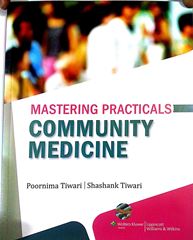
Puerperium: It is the period of 6 weeks immediately after delivery. In this period, the changes which took place in the organs/systems of the woman during pregnancy, come back to normal. This is also known as the post-partum period.
Recommended time for commencement of breastfeeding:
Early Initiation of Breastfeeding means breastfeeding all normal new-borns (including those born by caesarean section) as early as possible after birth, ideally within first hour. Colostrum, the milk secreted in the first 2-3 days, must not be discarded but should be fed to new-born as it contains high concentration of protective immunoglobulins and cells. No pre-lacteal fluid should be given to the new-born.
Prelacteal feeds: These include any food item given just after delivery, mostly just before commencement of breastfeeding. These usually include honey, ghutti, etc., depending on the local customs. The prelacteal feeds are not recommended at all.
Exclusive breastfeeding:
Exclusive breastfeeding means that an infant receives only breast milk from his/her mother or a wet nurse, or expressed breast milk, and no other liquids or solids, not even water. No additional food such as “ghutti” and dal water is to be given. Even water is not to be given even if the weather is extremely hot and dry.
The only exceptions include administration of oral rehydration solution, oral vaccines, vitamins, minerals supplements or medicines. Exclusive breastfeeding is recommended till 6 months of age.
Complementary feeding:
Complementary feeding means complementing solid/semi-solid food with breast milk after child attains age of six months. After the age of 6 months, breast milk is no longer sufficient to meet the nutritional requirements of infants. However infants are vulnerable during the transition, from exclusive breast milk to the introduction of complementary feeding, over and above the breastmilk. For ensuring that thee nutritional needs of a young child are met breastfeeding must continue along with appropriate complementary feeding. The term “complementary feeding” and not “weaning” should be used. The complementary feeding must be:
1. Timely – meaning that they are introduced when the need for energy and nutrients exceeds what can be provided through exclusive breastfeeding.
2. Adequate – meaning that they provide sufficient energy, protein and micronutrients to meet a growing child’s nutritional needs.
3. Safe – meaning that they are hygienically prepared and stored and fed with clean hands using clean utensils and not using bottles or teats.
Weaning:
Weaning is the gradual process through which a baby reduces its reliance on a predominantly liquid milk-based diet and gets used to eating adult foods. It usually involves introduction of semi-solid and then solid foods until the child’s diet consists of, largely the family food. The process varies from culture to culture. Healthy babies of weaning age are growing and developing very fast, so great care has to be taken to see that they get enough and the right kind of food. Weaning does not mean discontinuation of breastfeeding.
“Fully immunized” is defined as a child who has received all the due vaccines up to 1 year of age.
“Completely immunized” is defined as a child who has received all the due vaccines up to 2 years of age.
References:
1. GOI. Reading Material for ASHA, book no. 2. New Delhi: MoHFW; 2006.
2. GOI, 2013. Guidelines for Enhancing Optimal Infant and Young Child Feeding Practices. New Delhi: Food and Nutrition Board, Dept. of Women and Child Development, Min of Human Res Dev
3. WHO, 1998. WEANING from breast milk to family food: A guide for health and community workers. Geneva
4. GOI, 2016. Immunization Handbook for Medical Officers. New Delhi: MoHFW; 2016.
5. Poornima Tiwari, Shashank Tiwari. Chapter 13, In: Mastering Practicals in Community Medicine. 2nd ed. Lippincott Williams & Wilkins, New Delhi
(adsbygoogle = window.adsbygoogle || []).push({
google_ad_client: "ca-pub-2296304216845141",
enable_page_level_ads: true
});
Modified Kuppuswamy Classification of Socio - Economic Class: http://www.ihatepsm.com/blog/modified-kuppuswamy-scale
Prasad's Scale: http://www.ihatepsm.com/blog/prasad%E2%80%99s-scale
Dependency Ratio: http://www.ihatepsm.com/blog/dependency-ratio
Assessment of Overcrowding in a Household: http://www.ihatepsm.com/blog/assessment-overcrowding-household
Checking Adequacy of Lighting in a Room: http://www.ihatepsm.com/blog/checking-adequacy-lighting-room
Assessment of Adequacy of Ventilation: http://www.ihatepsm.com/blog/assessment-adequacy-ventilation
Family and the Types of Family: http://www.ihatepsm.com/blog/family-and-types-family
Checking for Mosquito Breeding Areas in a Household: http://www.ihatepsm.com/blog/checking-mosquito-breeding-areas-household
Life Cycle of Housefly: http://www.ihatepsm.com/blog/life-cycle-housefly
Types of Piped Water supply: http://www.ihatepsm.com/blog/types-piped-water-supply
Reference Indian Adult Man and Woman: http://www.ihatepsm.com/blog/reference-indian-adult-man-and-woman
Concept of the “Consumption Unit”: http://www.ihatepsm.com/blog/concept-%E2%80%9Cconsumption-unit%E2%80%9D
Methods of Dietary Survey: http://www.ihatepsm.com/blog/methods-dietary-survey
24-Hour Recall (Questionnaire) Method: http://www.ihatepsm.com/blog/24-hour-recall-questionnaire-method
Determination of Socio-economic Status of a Family in a Rural Area (the Uday Pareekh Scale): http://www.ihatepsm.com/blog/determination-ses-family-rural-area-uday-pa...
7 Terms used in Maternal and Child Health: Definition and Explanation: http://www.ihatepsm.com/blog/7-terms-used-maternal-and-child-health-defi...
Terms used in Family Health Study: Definitions and Explanations: http://www.ihatepsm.com/blog/terms-used-family-health-study-definitions-...
Lecture on the definitions and explanations of terms used in Family Health Study: http://www.ihatepsm.com/resource/terms-used-family-health-study-definiti...
Hindi lecture on the definitions and explanations of terms used in Family Health Study: http://www.ihatepsm.com/resource/terms-used-family-health-study-definiti...
Hindi lecture on CSC taking: https://www.youtube.com/watch?v=9gvuXrIJ_gY&t=10s
English lecture on CSC taking: https://www.youtube.com/watch?v=rKxXIyJuBz8&t=24s
Format for CSC taking: http://www.ihatepsm.com/blog/format-clinico-social-case-taking-community...
Geriatric CSC taking: http://www.ihatepsm.com/blog/geriatric-clinico-social-case-community-med...
